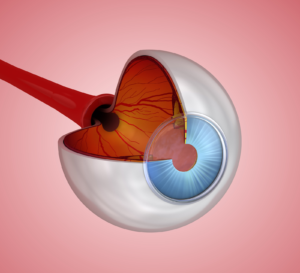Investigators from Cedars-Sinai have uncovered new insights into how diabetes delays wound healing in the eye, identifying for the first time two disease-associated changes to the cornea.

The findings, published in the journal Diabetologia, also revealed three therapeutic pathways that reversed these changes and partially restored wound-healing function to the cornea. This discovery could ultimately inform new treatments for diabetes.
The researchers found that diabetes induces more cellular changes than previously known. They discovered specific DNA modifications that alter gene expression, known as epigenetic alterations. More than 37 million people in the United States have diabetes, which can result in kidney disease, heart disease, amputation, stroke, and nerve damage.

The new research also identifies, for the first time, an important role of Wnt-5a, a secreted signaling protein found to be responsible for corneal wound healing and the function of stem cells. Ruchi Shah, PhD, a scientist in Ljubimov’s lab and the study’s first author, stated that understanding this novel epigenetically regulated wound-healing mechanism could lead to therapeutic treatments that could help patients avoid further long-term ocular health issues.
The team of scientists compared cells from the corneas of six diabetic patients with those of five healthy donors, discovering that in diabetic corneas, the protein product of the WNT5A gene was repressed. They also found an increase in the microRNA that inhibits WNT5A. The scientists then induced wounds to corneal cells in culture and corneal organ cultures, testing three interventions designed to normalize Wnt-5a protein expression. They added the Wnt-5a protein directly, introduced a DNA methylation inhibitor, and targeted microRNA levels with a novel gene therapy approach using a nanoscale compound.
All three therapeutic methods, in the diabetic samples, stimulated stem cell marker production and improved tissue regeneration, accelerating wound healing. Investigators will continue to analyze their data to better understand the mechanisms of WNT5A and other genes related to wound healing. They are also studying a combination therapy to target both microRNA and DNA methylation in hopes of normalizing wound healing by increasing Wnt-5a protein.
The goal is to develop topical, sustained-release drugs for corneal wound healing, using FDA-approved drugs that could be easily applied for effective future therapies
See: https://www.cedars-sinai.org/newsroom/study-identifies-how-diabetes-slows-healing-in-the-eye for the original article.